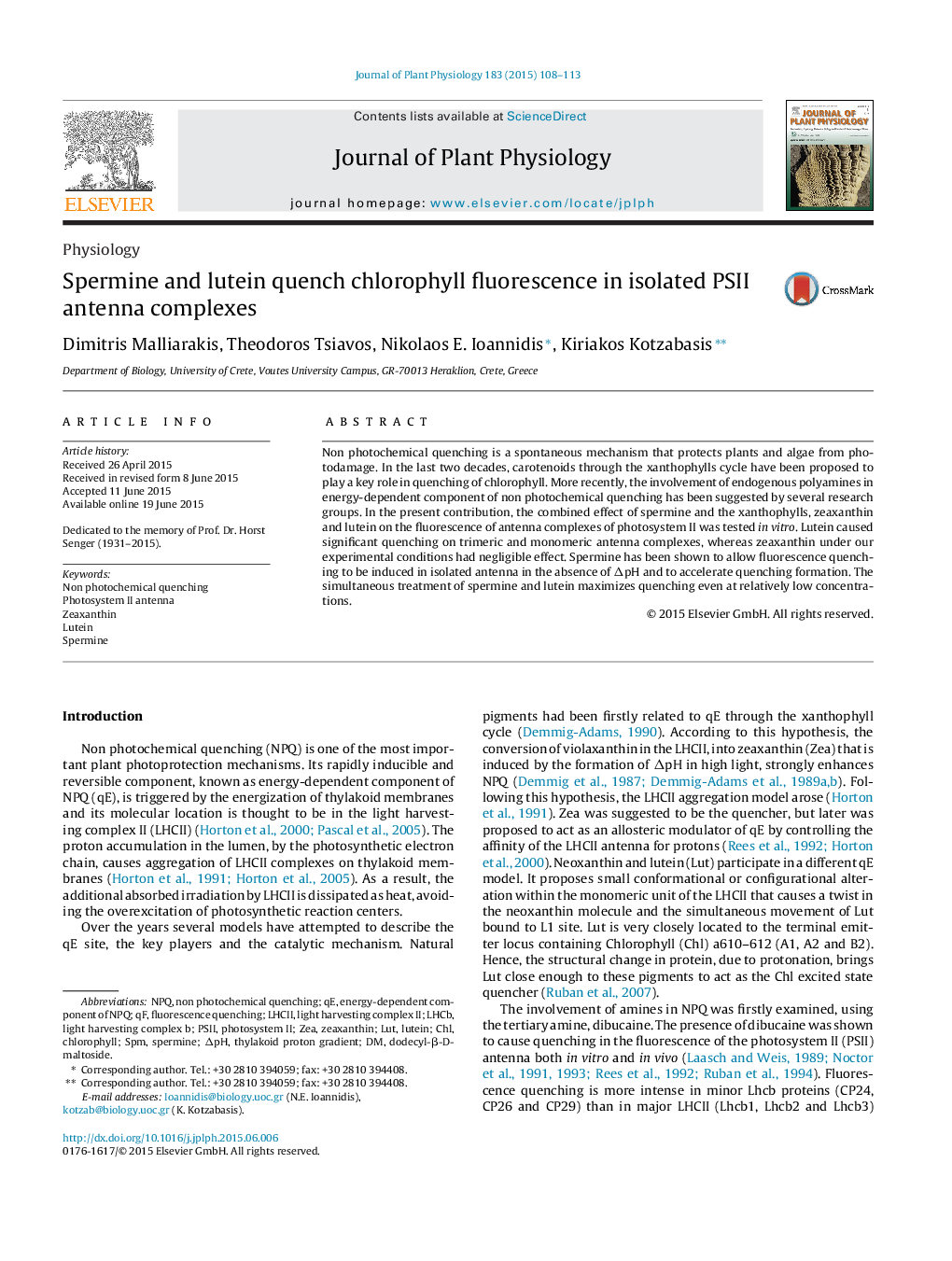| Article ID | Journal | Published Year | Pages | File Type |
|---|---|---|---|---|
| 8387404 | Journal of Plant Physiology | 2015 | 6 Pages |
Abstract
Non photochemical quenching is a spontaneous mechanism that protects plants and algae from photodamage. In the last two decades, carotenoids through the xanthophylls cycle have been proposed to play a key role in quenching of chlorophyll. More recently, the involvement of endogenous polyamines in energy-dependent component of non photochemical quenching has been suggested by several research groups. In the present contribution, the combined effect of spermine and the xanthophylls, zeaxanthin and lutein on the fluorescence of antenna complexes of photosystem II was tested in vitro. Lutein caused significant quenching on trimeric and monomeric antenna complexes, whereas zeaxanthin under our experimental conditions had negligible effect. Spermine has been shown to allow fluorescence quenching to be induced in isolated antenna in the absence of ÎpH and to accelerate quenching formation. The simultaneous treatment of spermine and lutein maximizes quenching even at relatively low concentrations.
Keywords
Related Topics
Life Sciences
Agricultural and Biological Sciences
Agronomy and Crop Science
Authors
Dimitris Malliarakis, Theodoros Tsiavos, Nikolaos E. Ioannidis, Kiriakos Kotzabasis,
